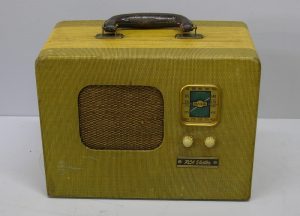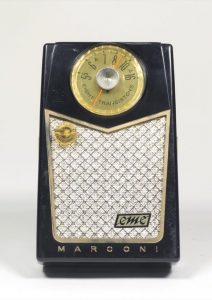Radio on the Move
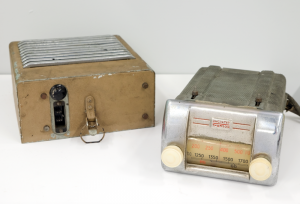
Ducretet-Thompson: D1935V Car Radio, (1951), 11 x 15 x 22.5cm, loudspeaker 22 x 20 x 10cm. Musée des ondes Emile Berliner.
From the earliest days of radio, battery-operated receivers were portable, if cumbersome. Listeners could take sets out with them, throw an antenna up in a tree, and find music to listen to while on a picnic with friends. But people found them too large and heavy to be carried very far. Radios were also designed for cars, although these, too, were far from common.
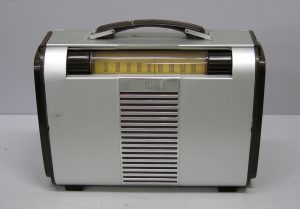
Transportable Tube Radio, RCA Victor: Model BP-6A (1949-50), 28 x 34 x 14cm. Musée des ondes Emile Berliner.
Radio really moved beyond the home in the postwar period. The late 1930s saw the invention of small, “low-drain” battery tubes, followed by the transistor in the late 1940s. In the 1950s, Canadians were able to take miniature or portable radios to the cottage, camping, or out to the beach.
Designers of modern plastic radios had compactness in mind. Some receivers, like the 1961 GE Model 807H, were brightened up with contrasting colours and modern design. In this case, a playful use of triangular forms helps capture the dynamism of radio on the move.
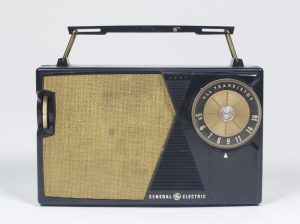
Transistor Radio, General Electric: Model P807J (1961), 11.5 x 18 x 6cm. Musée des ondes Emile Berliner.
Teenagers and young adults with disposable income for entertainment and luxury items popularized transistor radios in the 1960s. Hi-fi systems may have offered better listening conditions at home, but transistor radios allowed teenagers to hear the latest hits with friends out on the go.
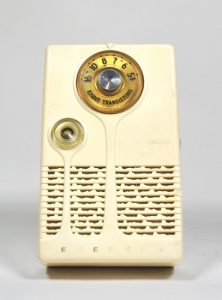
Transistor Radio, Emerson: Model Vanguard 888 (1957), 10.5 x 7 x 5cm. Musée des ondes Emile Berliner.
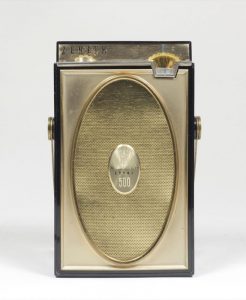
Transistor Radio, Zenith: model Royal 500 (1956), 15.5 x 10 x 4.5cm. Musée des ondes Emile Berliner.
When radio moved into cars and portable devices in the postwar years, its function changed significantly. No longer just associated with bringing the world into the home, it could accompany Canadians throughout their days. Car and transistor radios allowed Canadians to bring a sense of home with them everywhere.


